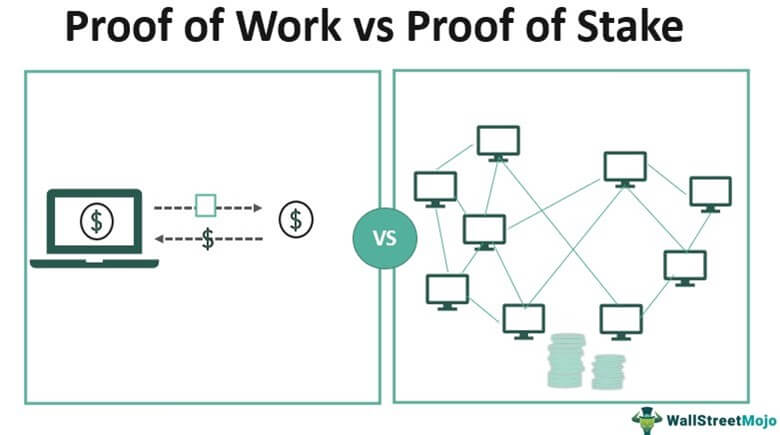The Environmental Elephant in the Room
Cryptocurrency, since its popularization, has been seen as a weird trend at best and ‘big bad technology’ at worst. It seems strange for a technology that is so grounded in the values of decentralization, privacy, and community. However, the criticism cannot be ignored on one front — the environmental.

Although cryptocurrency is by far from being the sole problem, the criticism was undeniable. Cryptocurrency mining was a massive drain on energy and a big emissions culprit. Cryptocurrency has already revolutionised much about commerce, and its next efforts are directed at the environment.
The goal of most blockchains is to move toward carbon neutrality. After all, cryptocurrency and the blockchain are not mere technologies or financial tools. They are a vision for the long-term future. This commitment to sustainability is exemplified in the big cryptocurrency event of the year — The Ethereum Merge.
The Ethereum Merge and the Environment
The ‘Merge’ as it’s known, is a technological breakthrough by creators of the Ethereum blockchain. One of its main goals is to set cryptocurrency on the green path. This is no patchwork fix, either. The large-scale, structural changes announced caused frenzy in the crypto-space, with good reason. So what is the Merge, and what does it have to do with the environment?
Ethereum is a blockchain network, which means it is a mode of decentralised data storage. Instead of passing data through a large central ‘node’, it uses smaller nodes. One user’s data is ‘sharded’ beyond recognisability, then stored in shards in each of these nodes. On Ethereum, every user is one node in the blockchain.
The blockchain is a distributed ledger where new data/transactions are added as one ‘block’. This ensures it is secure and tamper-proof as any altered version of a block would be rejected by all following blocks. However, creating and maintaining blocks is a resource intensive process. There must be a system to regulate the frequency of block creation and that blocks are safe.
The Past: Proof of Work
The challenge of a decentralized network is that without a central authority, one must find a new way to deal with bad actors. The way that blockchains such as Ethereum and Bitcoin dealt with this was using a ‘Proof of Work’ system.
PoW exists to implement control on the number and frequency of blocks being created. It works by providing an arbitrary challenge — a cryptographic puzzle of a set difficulty. The process of solving it is based on luck rather than merit — a lottery system that generates one right answer, for someone every ten minutes.
This is the process that has become a buzzword — mining. The problem is the millions of nodes solving this puzzle over and over again to generate a code. This is what makes mining such a massive computational effort and energy drain. This requires a lot of power that generates a massive carbon footprint.

In just one year, just one cryptocurrency’s mining footprint — Bitcoin’s — was equivalent to that of countries like Jordan and Sri Lanka. The mining of Bitcoin alone in a year would account for 1% of the world’s electricity consumption. There was no dispute, especially from the creator of Ethereum, Vitalik Buterin. There was definitely something that needed to be fixed about the way cryptocurrency worked.
Proof of Stake is that fix.

The Present - Proof of Stake
Proof of Stake is the successor of the Proof of Work process described above. The POW system verifies that the user has capital at risk through mining. POS, meanwhile, asks ETH users to voluntarily participate as validators. This works in the following manner:
To become a validator, a user must stake 32 ETH into a smart contract. They must also have the necessary hardware and provided software to validate blocks.
Once activated, the validator runs the software that checks new blocks. If the block is valid, they send a vote validating that block across the chain.
A committee of validators is randomly chosen every 12 seconds to verify a block. If their votes are unanimous the block is verified and added to the chain.
Validators are offered additional cryptocurrency for their services. However, if a validator attempts to misuse the process or act dishonestly, their 32 ETH stake can be destroyed, partially or completely. This makes cyber-attacks difficult and costly.
The Benefit of POS for Cryptocurrency
POS is superior to POW in many ways due to its greater sustainability. Here are some of the positive changes it is bringing to the world of cryptocurrency:
- Environmental Impact: One of the biggest criticisms of cryptocurrency was its giant carbon footprint. By eliminating mining, Ethereum is set to cut its energy emissions by an unbelievable 99.5%.
- Low Requirements: Only widely available hardware and provided software is required to become a validator. This increases the number of verification nodes on the network. This promotes decentralization by lowering barriers to entry.
- Security: As there are more verifying nodes possible, and a monetary stake for each of them, bad faith actions become discouraged and very expensive.
Although the list goes further, just the environmental factor would be enough to deem this revolutionary. The shift to POS would make cryptocurrency a sustainable financial and technological future for humanity. With the minimized carbon footprint, blockchain protocols would eventually prove to be greener than their old alternatives. The cryptocurrency community’s quick response to this criticism charts an optimistic course for the future. Cryptocurrency is a testament to self-governance, innovation, and reliability. It’s time for the narrative to catch up.

